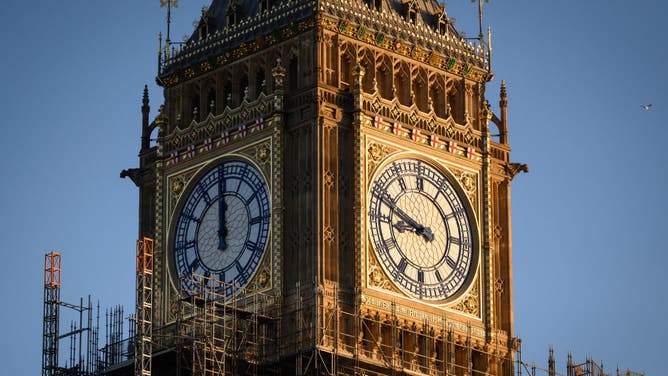Daylight saving time 2023: What’s the status of the Sunshine Protection Act?
The bill, named the Sunshine Protection Act, would ensure Americans would no longer have to change their clocks twice a year and while the goal was to enact said bill by 2023, things haven’t really gone to plan.
Explained: What is daylight saving time and why we turn our clocks back
Daylight saving time, or DST, allows for an extra hour of light in the evening during the warmer months.
Nov. 5 marks the end of daylight saving time.
As the United States falls backward to gain an hour, many may be wondering what happened to that bill that was introduced last year aiming to make daylight saving time permanent across the country.
The bill, named the Sunshine Protection Act, would ensure Americans would no longer have to change their clocks twice a year and while the goal was to enact said bill by 2023, things haven’t really gone to plan.
What’s the status of the Sunshine Protection Act?

A man holds an umbrella as it begins to rain near the U.S. Capitol on Wednesday afternoon September 22, 2021, in Washington, DC.
(Drew Angerer / Getty Images / FOX Weather)
The U.S. Senate unanimously approved the bill this past March, but it did not pass in the House, so it didn’t make it to President Joe Biden’s desk for his signature.
The bill is currently in limbo, according to Congress’ website.
Over the past five years, states have increasingly pushed to remain on daylight saving time. Citing the Farmers' Almanac, FOX Weather noted that at least 33 have attempted to keep daylight saving time year-round through state legislative efforts.
GROWING MOVEMENT TO MAKE DAYLIGHT SAVING TIME PERMANENT
Florida and California state lawmakers voted in 2018 to make daylight saving time permanent, but the change still requires approval from the U.S. House of Representatives. According to the USDOT, federal law allows an individual state not to observe daylight saving time. Still, it does not allow states to make daylight saving time permanent, FOX Weather reported.
Congress regularly considers the possibility of making daylight saving time year-round, citing health concerns about the effects of time changes.
What is daylight saving time?

The US Naval Observatory Master Clock on Massachusetts Avenue and 34th Street in Washington, DC on November 3, 2011.
(Linda Davidson / The Washington Post / Getty Images)
Daylight saving time is defined as a period between spring and fall when clocks in most parts of the country are set one hour ahead of standard time. According to federal law, it always starts on the second Sunday in March and ends on the first Sunday in November.
WHAT IS THE HISTORY OF DAYLIGHT SAVING TIME?
The practice of falling back in the U.S. started in 1918 during World War I as a way to conserve fuel. By moving the clocks ahead an hour, backers believed the country could divert a bit of coal-fired electricity to the military instead of using it for an hour of home power. It was reenacted in World War II.
Which states don’t observe daylight saving time?

Man holds a hand in front of the dial of a tower clock.
( Armin Weigel / picture alliance / Getty Images)
Nearly a dozen states across the U.S. have already standardized daylight saving time.
The list of states that won’t be changing their clocks on Nov. 5 include:
- Hawaii
- Arizona
- American Samoa territories
- Guam
- Northern Mariana Islands
- Puerto Rico
- U.S. Virgin Islands
10 THINGS TO CHANGE IN YOUR HOME WHEN YOU CHANGE YOUR CLOCKS
Is daylight saving time observed outside the US?

Two of the clock faces on Queen Elizabeth Tower, commonly referred to as Big Ben, are seen as renovation work nears completion, on January 05, 2022 in London, England.
(Photo by Leon Neal/Getty Images / Getty Images)
Yes. There are other countries that observe daylight saving time.
Almost all of Europe, with the exception of Armenia, Azerbaijan, Belarus, Georgia, Iceland, Russia and Turkey, participate in daylight saving time.
HOW DAYLIGHT SAVING TIME CAN IMPACT YOUR HEALTH
In addition, parts of Canada, Latin America, the Caribbean, and Australia observe it.
And Egypt is the only country on the African continent to observe daylight saving time.
This story was reported from Los Angeles.
